
Sam Dodini
@microsamonomics.bsky.social
Dallas Fed Economist, CESifo, IZA // Labor institutions, imperfect labor markets, public econ // Volleyball and music enthusiast
Views my own
Views my own
There is a lot more detail in the paper, including tests to rule out people's favorite alternative explanations.
t.co/xObtAFPZOh
t.co/xObtAFPZOh
https://www.iza.org/publications/dp/17830/the-power-to-discriminate
t.co
April 16, 2025 at 3:00 PM
There is a lot more detail in the paper, including tests to rule out people's favorite alternative explanations.
t.co/xObtAFPZOh
t.co/xObtAFPZOh
Greater labor market competition has an equalizing effect across workers & helps to reduce discrimination. But so does good information about where each worker stands in his/her true productivity--when employers don't rely on coarse proxies like demographic group.
April 16, 2025 at 3:00 PM
Greater labor market competition has an equalizing effect across workers & helps to reduce discrimination. But so does good information about where each worker stands in his/her true productivity--when employers don't rely on coarse proxies like demographic group.
What stands out is that in the concentrated markets, the firms most likely to hire non-Western immigrants have managers who have more prior work experience with immigrants-those who know their productivity best! Another signal of *information* & beliefs being the culprit.
April 16, 2025 at 3:00 PM
What stands out is that in the concentrated markets, the firms most likely to hire non-Western immigrants have managers who have more prior work experience with immigrants-those who know their productivity best! Another signal of *information* & beliefs being the culprit.
Second-generation immigrants don't experience the same discriminatory gaps. Neither do immigrants who have been in the country for ~20 years or immigrants from western Europe & the US.
April 16, 2025 at 3:00 PM
Second-generation immigrants don't experience the same discriminatory gaps. Neither do immigrants who have been in the country for ~20 years or immigrants from western Europe & the US.
We use the richness of the data to rule out a bunch of other mechanisms like different job search, social networks, being hired at firms with immigrant managers, take-up of social programs, or sorting into different occupations. None of these explain the gaps.
April 16, 2025 at 3:00 PM
We use the richness of the data to rule out a bunch of other mechanisms like different job search, social networks, being hired at firms with immigrant managers, take-up of social programs, or sorting into different occupations. None of these explain the gaps.
What's remarkable is that these gaps are there even when both workers are displaced from the same firm but then re-hired into the same firm! In other words, the immigrant is paid far less than his co-worker at the same company even when they were paid the same before the layoff!
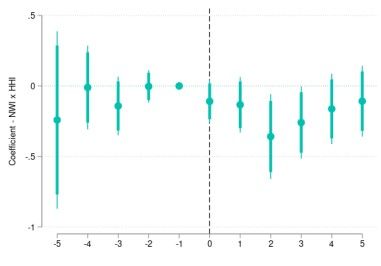
April 16, 2025 at 3:00 PM
What's remarkable is that these gaps are there even when both workers are displaced from the same firm but then re-hired into the same firm! In other words, the immigrant is paid far less than his co-worker at the same company even when they were paid the same before the layoff!
By the 4th year after the layoff, gaps even in the most concentrated labor markets close, implying the discrimination is based on beliefs about the average productivity differences between immigrants & natives.
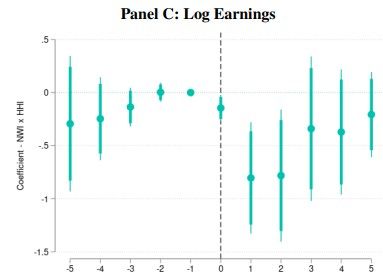
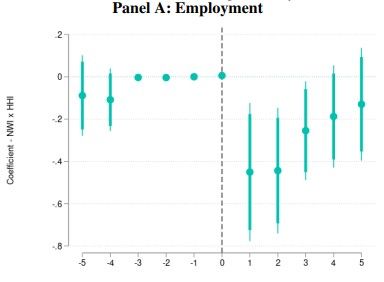
April 16, 2025 at 3:00 PM
By the 4th year after the layoff, gaps even in the most concentrated labor markets close, implying the discrimination is based on beliefs about the average productivity differences between immigrants & natives.
So what kind of discrimination is this? Taste-based (prejudice/animus) or based on beliefs about their productivity (like statistical discrimination)? If tastes, there's not much reason for gaps between the workers to close. But beliefs can update over time & gaps will close.
April 16, 2025 at 3:00 PM
So what kind of discrimination is this? Taste-based (prejudice/animus) or based on beliefs about their productivity (like statistical discrimination)? If tastes, there's not much reason for gaps between the workers to close. But beliefs can update over time & gaps will close.
Competition STRONGLY reduces discrimination among employers, but does not quite completely eliminate it (call it win for Becker). Next we measure if this is labor market power or product market power that matters. Looks like it's loading entirely on labor market power.
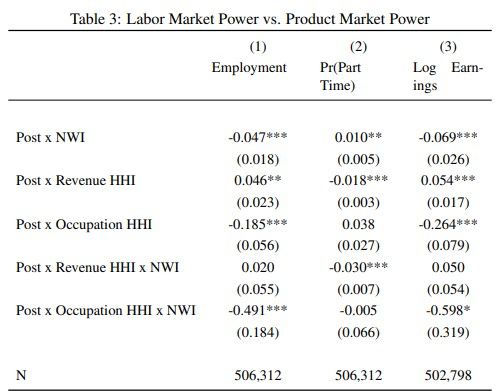
April 16, 2025 at 3:00 PM
Competition STRONGLY reduces discrimination among employers, but does not quite completely eliminate it (call it win for Becker). Next we measure if this is labor market power or product market power that matters. Looks like it's loading entirely on labor market power.
We find fairly small discriminatory gaps between non-Western immigrants & other workers in competitive markets, but large gaps in concentrated (less-competitive) markets. At HHI=0.25 (~4 equally sized employers for that occupation) the immigrants earn 26% less!
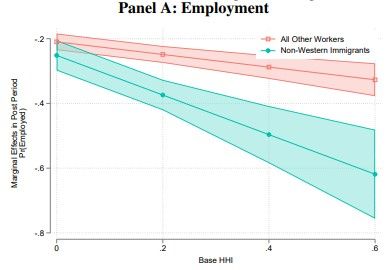
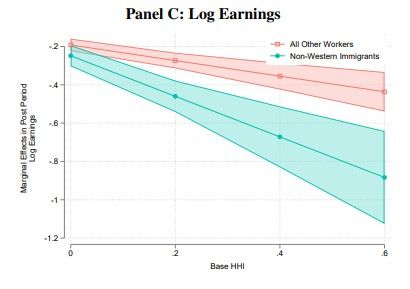
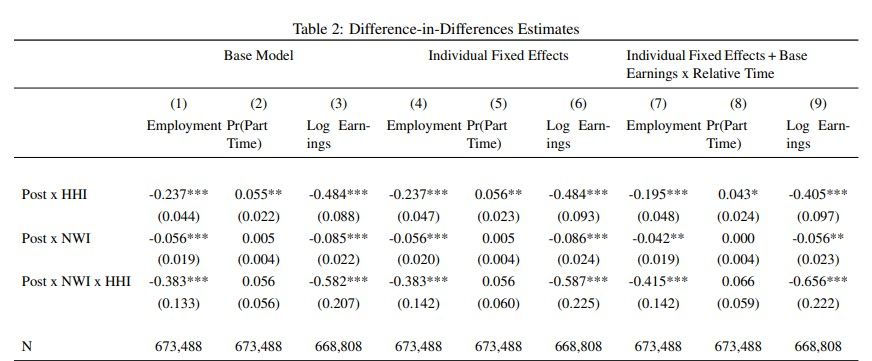
April 16, 2025 at 3:00 PM
We find fairly small discriminatory gaps between non-Western immigrants & other workers in competitive markets, but large gaps in concentrated (less-competitive) markets. At HHI=0.25 (~4 equally sized employers for that occupation) the immigrants earn 26% less!
We measure market competition by the concentration (HHI) of employment in the year their firm closure or mass layoff. 1=one single employer for everyone in that occupation in their city. We then track the gaps between the worker pairs as they search in a diff-in-diff setting.
April 16, 2025 at 3:00 PM
We measure market competition by the concentration (HHI) of employment in the year their firm closure or mass layoff. 1=one single employer for everyone in that occupation in their city. We then track the gaps between the worker pairs as they search in a diff-in-diff setting.
Suddenly, their firm closes, & they are forced to look for a new job. Prior to the firm closing, the market valued their skills EXACTLY the same. Immigrant-native gaps after their search can tell us about discrimination--especially the difference between the two pairs.
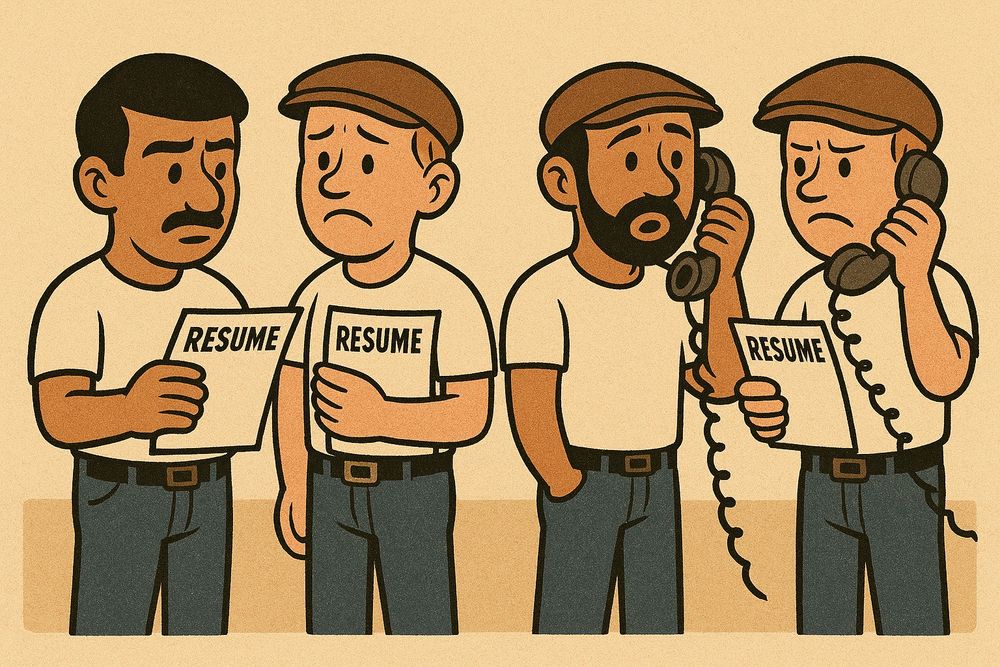
April 16, 2025 at 3:00 PM
Suddenly, their firm closes, & they are forced to look for a new job. Prior to the firm closing, the market valued their skills EXACTLY the same. Immigrant-native gaps after their search can tell us about discrimination--especially the difference between the two pairs.
Imagine you have four workers-2 immigrants & 2 natives working at the same firm doing the same job for the same pay. One pair (1 immigrant & 1 native) work in a city where there are lots of employers that will hire for their occupation. For the other, there are fewer employers.

April 16, 2025 at 3:00 PM
Imagine you have four workers-2 immigrants & 2 natives working at the same firm doing the same job for the same pay. One pair (1 immigrant & 1 native) work in a city where there are lots of employers that will hire for their occupation. For the other, there are fewer employers.
Our context is Norway--long considered one of the most egalitarian societies in the world--and discrimination against immigrants from outside of 'the West.' If we can find discrimination there, it's likely to be in other places. So how do we investigate this?

April 16, 2025 at 3:00 PM
Our context is Norway--long considered one of the most egalitarian societies in the world--and discrimination against immigrants from outside of 'the West.' If we can find discrimination there, it's likely to be in other places. So how do we investigate this?
iza.org/publications...
A long history of economic theory says that sufficient competition should kill discrimination, but that's been mostly focused on product market competition. We look at the role of labor market competition in allowing for discrimination.
A long history of economic theory says that sufficient competition should kill discrimination, but that's been mostly focused on product market competition. We look at the role of labor market competition in allowing for discrimination.
The Power to Discriminate
This paper examines the relationship between labor market power and employer discrimination, providing new causal evidence on when and where discrimin...
iza.org
April 16, 2025 at 3:00 PM
iza.org/publications...
A long history of economic theory says that sufficient competition should kill discrimination, but that's been mostly focused on product market competition. We look at the role of labor market competition in allowing for discrimination.
A long history of economic theory says that sufficient competition should kill discrimination, but that's been mostly focused on product market competition. We look at the role of labor market competition in allowing for discrimination.
There is a lot more in the working paper!
Human capital retention matters in strategic sectors like healthcare, so policies should reflect the balance between these priorities and public systems should be responsive to local economic conditions.
www.iza.org/publications...
Human capital retention matters in strategic sectors like healthcare, so policies should reflect the balance between these priorities and public systems should be responsive to local economic conditions.
www.iza.org/publications...
The Fatal Consequences of Brain Drain
This paper examines the welfare consequences of reallocating high-skilled labor across borders. A labor demand shock in Norway—driven by a surge in oi...
www.iza.org
April 8, 2025 at 5:37 PM
There is a lot more in the working paper!
Human capital retention matters in strategic sectors like healthcare, so policies should reflect the balance between these priorities and public systems should be responsive to local economic conditions.
www.iza.org/publications...
Human capital retention matters in strategic sectors like healthcare, so policies should reflect the balance between these priorities and public systems should be responsive to local economic conditions.
www.iza.org/publications...
So what happened in Norway? We are not able to detect any measurable effect of the incoming commuters on mortality events, physician retention, or other metrics in Norway. There appears to have been no offsetting gain in Norway.
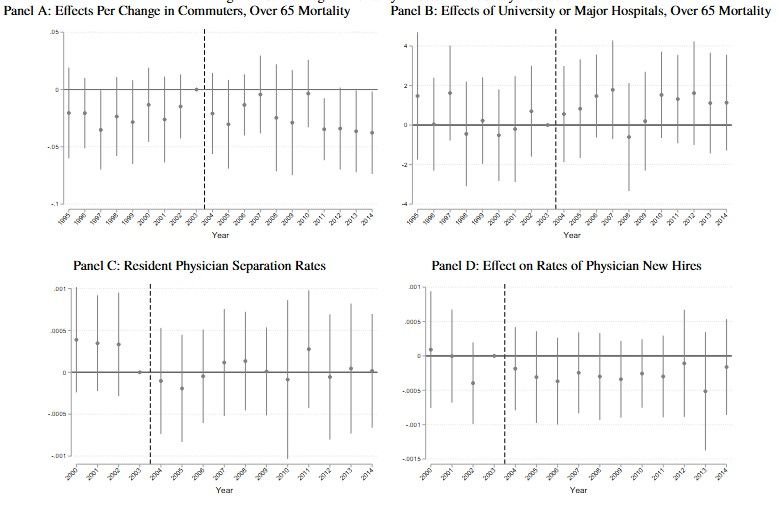
April 8, 2025 at 5:37 PM
So what happened in Norway? We are not able to detect any measurable effect of the incoming commuters on mortality events, physician retention, or other metrics in Norway. There appears to have been no offsetting gain in Norway.
The effects hit hardest in areas with lower physician density before the commuting started. So the out-commuting of doctors increased inequality across classes and across places within Sweden.
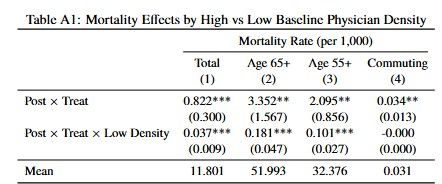
April 8, 2025 at 5:37 PM
The effects hit hardest in areas with lower physician density before the commuting started. So the out-commuting of doctors increased inequality across classes and across places within Sweden.
These illnesses are more likely to require emergency care. Guess which physicians were most likely to commute? High-skilled, young, generalists--those most likely to staff emergency departments.

April 8, 2025 at 5:37 PM
These illnesses are more likely to require emergency care. Guess which physicians were most likely to commute? High-skilled, young, generalists--those most likely to staff emergency departments.

